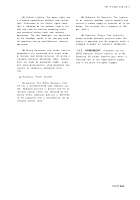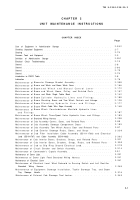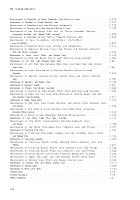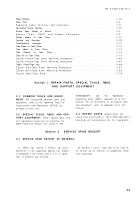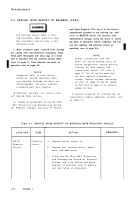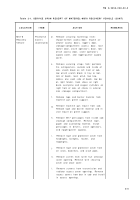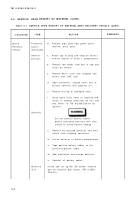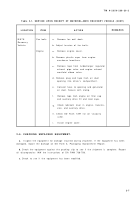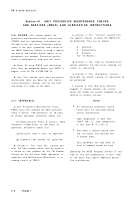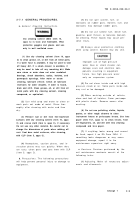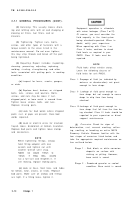TM-9-2350-238-20-2 - Page 28 of 495
CAUTION
TM 9-2350-238-20- 2
2-7.1 GENERAL PROCEDURES (CONT) .
(2)
Servicing.
This usually means drain -
ing and refilling units with oil and changing or
cleaning oil filters, fuel filters, and air
cleaners .
(3)
Tightening.
Tighten nuts, bolts ,
screws, and other types of fasteners with a
torque wrench to the value listed in th e
maintenance manual. Do not over tighten ;
this may strip threads and break off the par t
being tightened .
(4)
Repairing.
Repair includes inspecting ,
cleaning, preserving, adjusting, replacing ,
welding, riveting, strengthening, and othe r
tasks associated with putting parts in workin g
condition .
(a)
Inspect for burrs, cracks, gouges ,
or nicks .
(b)
Replace bent, broken, or strippe d
bolts, nuts, screws, and washers. Bolts ,
screws, and nuts may be loose if rust ,
chipped paint, or bare metal is around them .
Tighten loose screws, bolts, and nuts .
Replace missing parts .
(c)
Look for bad welds where chippe d
paint, rust, or gaps are present. Have ba d
welds repaired .
(d)
Look at electric wires for cracked ,
frayed, loose, discolored, or broken insulation .
Replace bad parts and tighten loose clamps
and connectors .
NOT E
When tightening fittings, alway s
hold fitting adapter with on e
wrench and tighten nut wit h
another wrench until snug .
Tighten
nut
around
1/6-turn
to
1/3-turn.
If
fitting
leaks,
unscrew
nut a full turn and retighten it. If
still leaking, replace leaking parts .
(e)
Look at hose, fluid lines, and tubes
for bends, wear, cracks, or leaks. Replac e
bad parts. Make sure all clamps and fittings
are tight. If a fitting leaks, tighten it .
Equipment operation is allowabl e
with minor leakages (Class l or ll) .
Of course, you must consider th e
fluid capacity in the item/syste m
being checked/inspected. When i n
doubt, notify your supervisor .
When operating with Class I or
Class II leaks, continue to check
fluid levels as required in your
PMCS. Class lll leaks must be
repaired .
NOT E
Fluid leaks affect vehicle status .
Learn the following classes o f
fluid leaks for unit PMCS .
Class l- Seepage of fluid (as indicated by
wetness or discoloration) not grea t
enough to form drops .
Class ll- Leakage of fluid great enough to
form drops but not enough to caus e
drops to drip from item bein g
checked .
Class Ill-Leakage of fluid great enough t o
(5)
form drops that fall from the item be-
ing checked. Class Ill leaks should be
reported to your supervisor or direc t
support maintenance .
Corrosion.
Check for signs o f
deterioration, rust, unusual cracking, soften-
ing, swelling, or breaking on entire M57 8
Recovery Vehicle. Become familiar with th e
four stages of corrosion listed below, an d
take the appropriate required maintenance ac-
tion outlined below .
Stage 1 - Red, black, or white corrosio n
deposits on surface wit h
etching or pitting. However ,
base metal is sound .
Stage 2 - Powdered granular or scale d
condition. Base metal is sound .
2-1 0
Change 1
Back to Top

